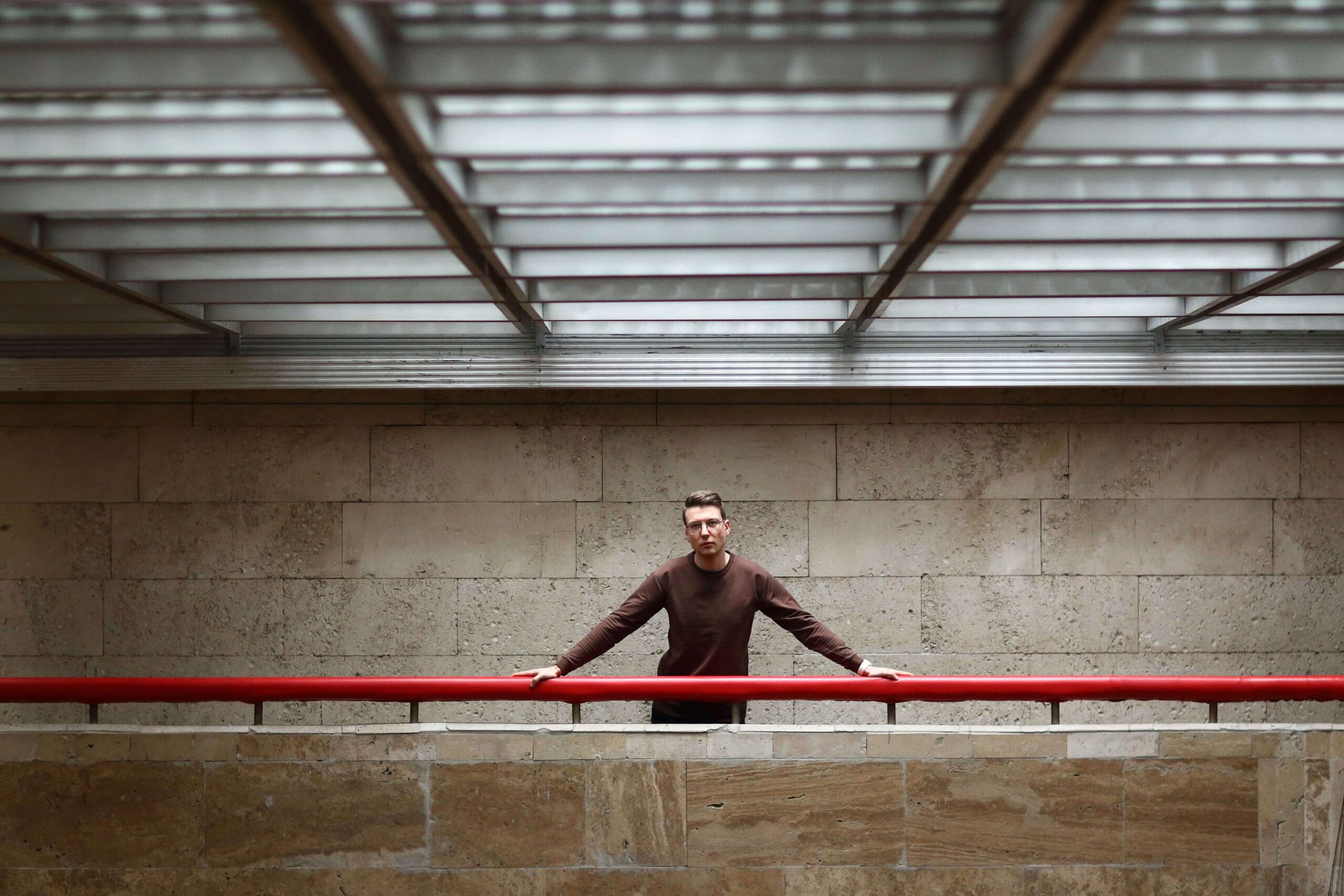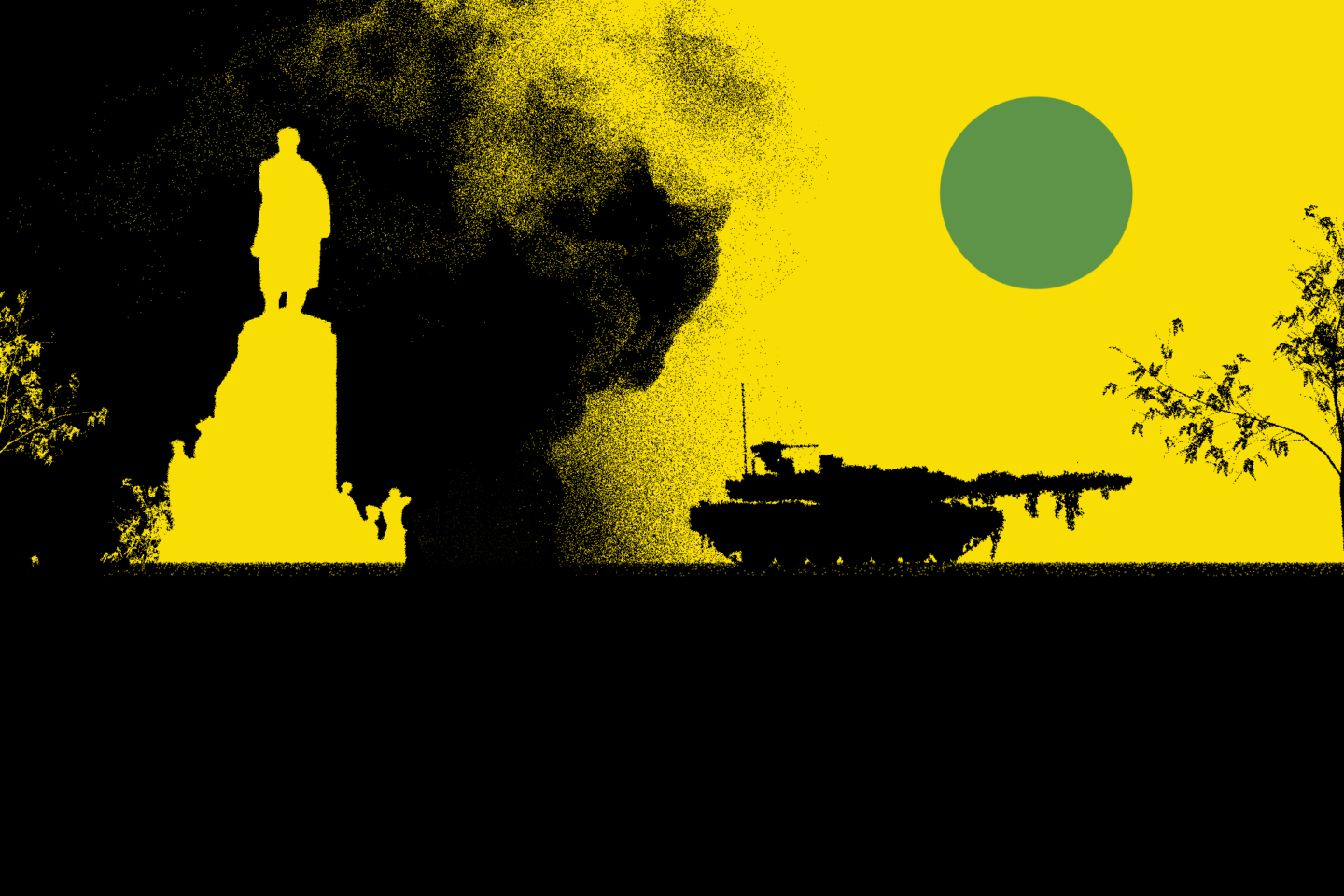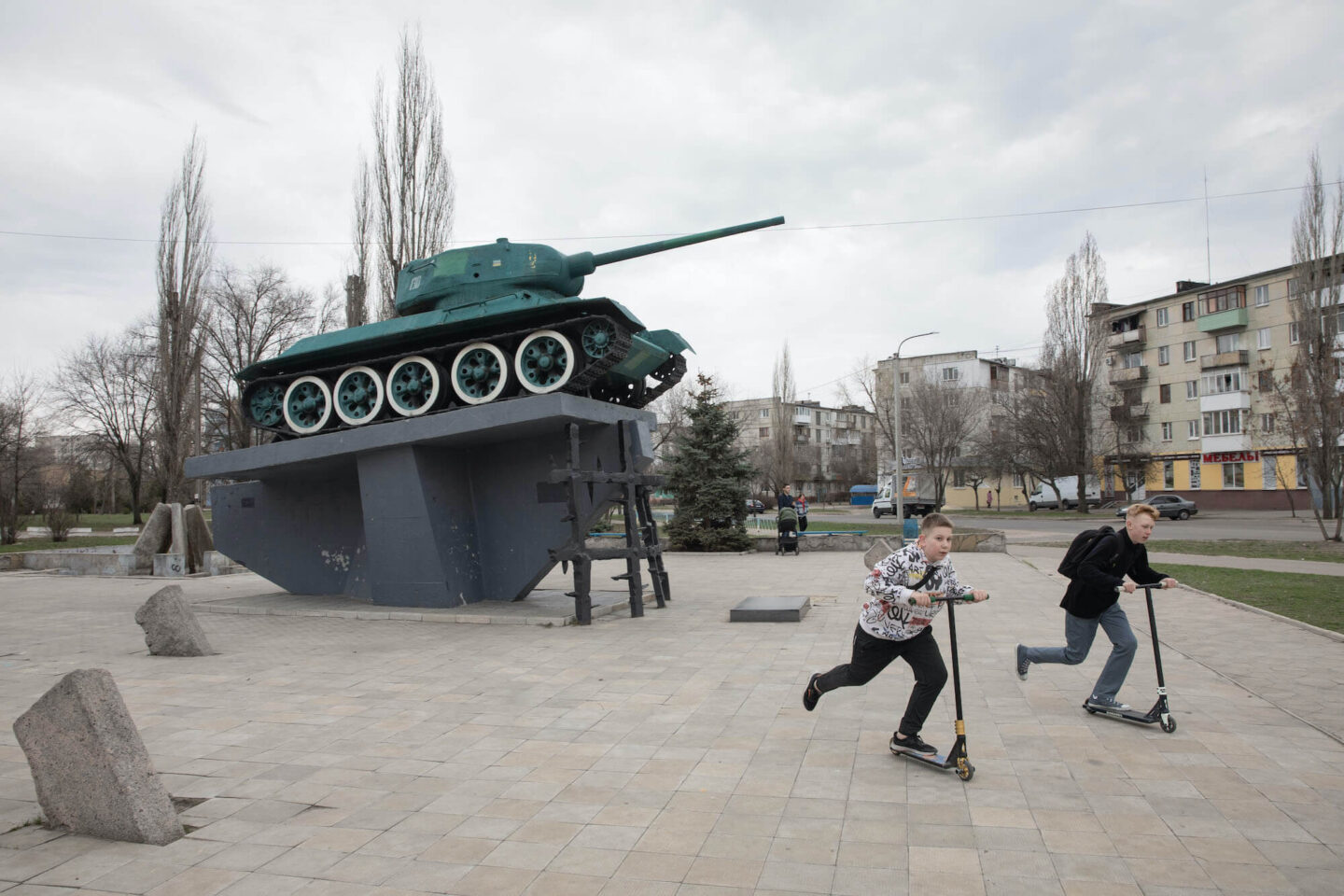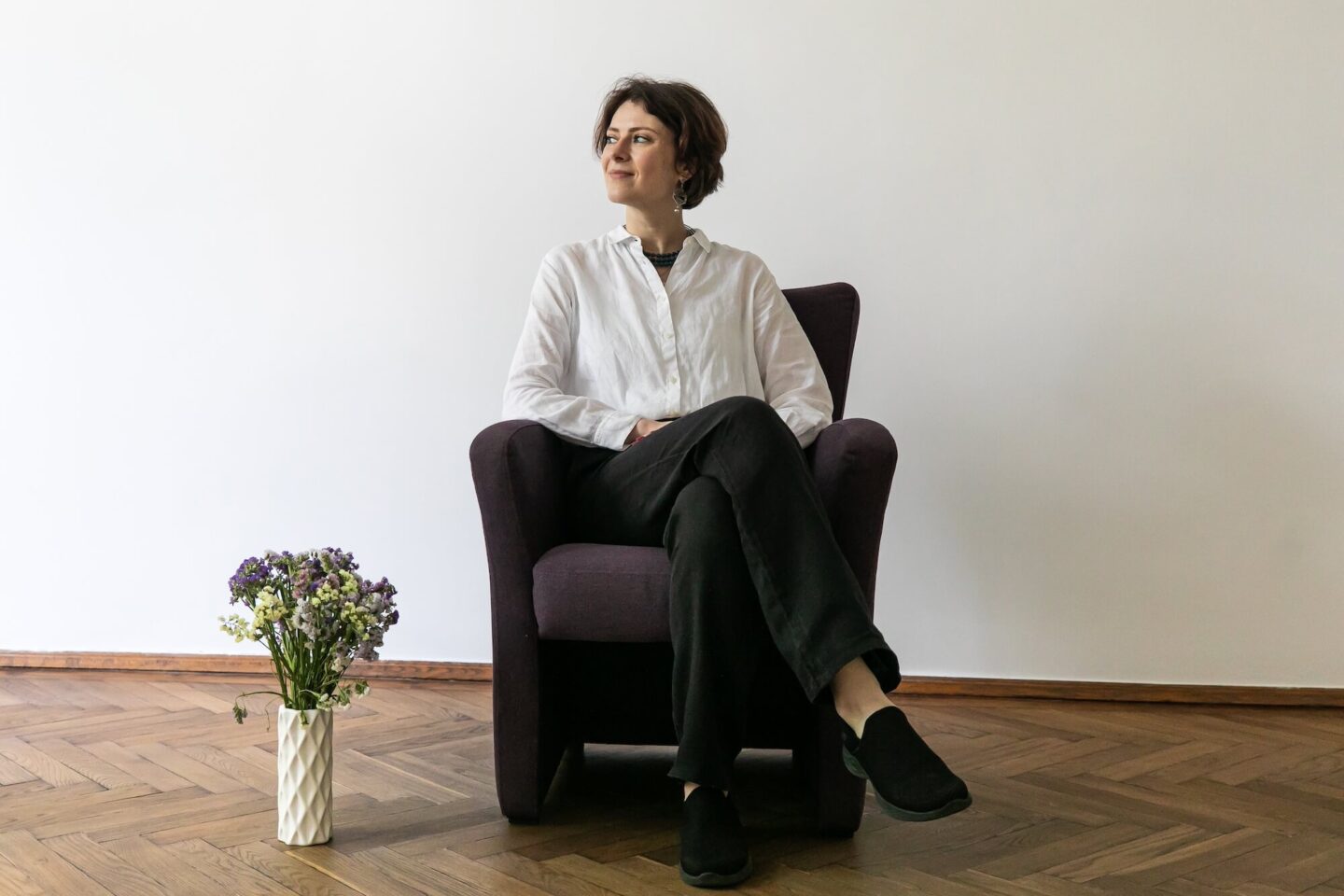Anton Atamanchuk, a teacher at a Kyiv gymnasium, has 36 second graders and almost one hundred thousand followers on TikTok, where he shows how he learns songs with the kids, goofs around during breaks, and listens to funny student explanations during class. “Too bad I’m not in second grade,” is one of the most common comments on Anton’s videos.
Anton is 25 and he has dreamed of being a teacher all his life. He didn’t know then that the end-of-day school bell would often overlap with an air-raid alert. Instead of a break, Anton would have to lead his students to the school shelter for hours, one by one in a chain, an algorithm they have long known. There, in the dark, he would put on a shadow play with a flashlight and calm those for whom the siren sound is still the biggest trigger.
Anton talked to The Ukrainians about how the full-scale war has changed children, how the New Ukrainian School reform aims to raise conscious adults with a clear civic stance, and about the importance of emotional resilience and living in society.
How would you describe your relationship with your students?
When I took the class, I assured everyone that these were not “my children” and that no one would love anyone here. We’re here for business, we’re partners. Nope, that didn’t work out [laughs]. We have a friendly relationship. I would communicate the same way with my own kids.
They share everything with me, telling me about their families and worries. I know so much that there’s a lot I’d rather not know. They’re constantly hugging me. They come over, lay down on their desk, and say, “I’m sad, do something about it.” And then they wander off melancholically into the sunset. They treat me like family.
How would you characterize your teaching approach?
In my class, children do so many things on their own that it might seem like I haven’t done anything at all.
To me, a cool child is an independent child. If a child is helpless—how will they survive?
Children will go into adult life with the things they’re used to doing every day. That’s why my classroom is often chaotic. I don’t repeat the same thing a thousand times. I don’t say, “Pick up, put down.” I say, “Look around you.” They look and fix it. During tests, I explain: “This is a check-up, a diagnostic of your work. And whatever result you get will be amazing because you now know more than you did before.”

For lessons, my main creed (if I had one) is that everything should be interactive. Kids love tactile things. For instance, we studied the properties of water. If I had just told them that it’s colorless, transparent, and odorless, it would have gone in one ear and out the other. Instead, I brought a vase of water. Each child smelled it, shook it, dipped a brush, blew bubbles, added paint to see how water dissolves other substances. And it’s the same with everything. If we’re studying the globe, each child gets to spin it, touch it. Then, for reinforcement, they’ll draw it, with the axis, equator, and poles. It’s an activity-based approach—one of the principles of the New Ukrainian School.
What are the main principles of the new Ukrainian school (NUS)?
NUS is designed to raise a cool, modern citizen of Ukraine. It’s a comprehensive approach, integrating development of thinking, knowledge, social skills, and patriotic education across different subjects. For example, one week, I came to class with a pair of glasses and announced that someone had lost them. I asked the kids what we should do. The kids immediately came up with ideas. In Ukrainian language class, each child created a lost-and-found notice; in “I Explore the World” [equivalent to “science” in Western countries — Ed.], we talked about different types of glasses; in art, we discussed the expression “seeing the world through rose-colored glasses” and painted it. In math, we looked at mirror numbers. Eventually, a child from another class came to thank us for finding her glasses, and now my students know what to do in such a situation.
We also learn to filter information and basic media literacy. We’ve looked at magazines, created our own covers, discussed ethics, and talked about pricing matching content quality. In a year or two, they’ll understand plagiarism, academic integrity, copyright, and that you shouldn’t trust information from an unknown source.
This should be the standard everywhere. But some do it, and some don’t. Unfortunately, there’s no system for monitoring adherence to these standards. Most teachers are older women with Soviet mentalities who have been teaching the same way for 40 years and don’t want to change. It’s much easier for kids to open their notebooks, look at the textbook, write things down, rinse and repeat.
I dream that everyone will follow education standards. Take small steps forward. I’m convinced they’ll enjoy it; they just need to try.
The hardest part is colleagues with the Soviet mentality. It’s hard to get rid of. I myself had needed time to accept the fact that I’m just as much of a person as the principal or head of the education department. I used to be different, and then something changed in my head. Now I can come to the principal and argue. I don’t feel afraid or want to sit quietly.
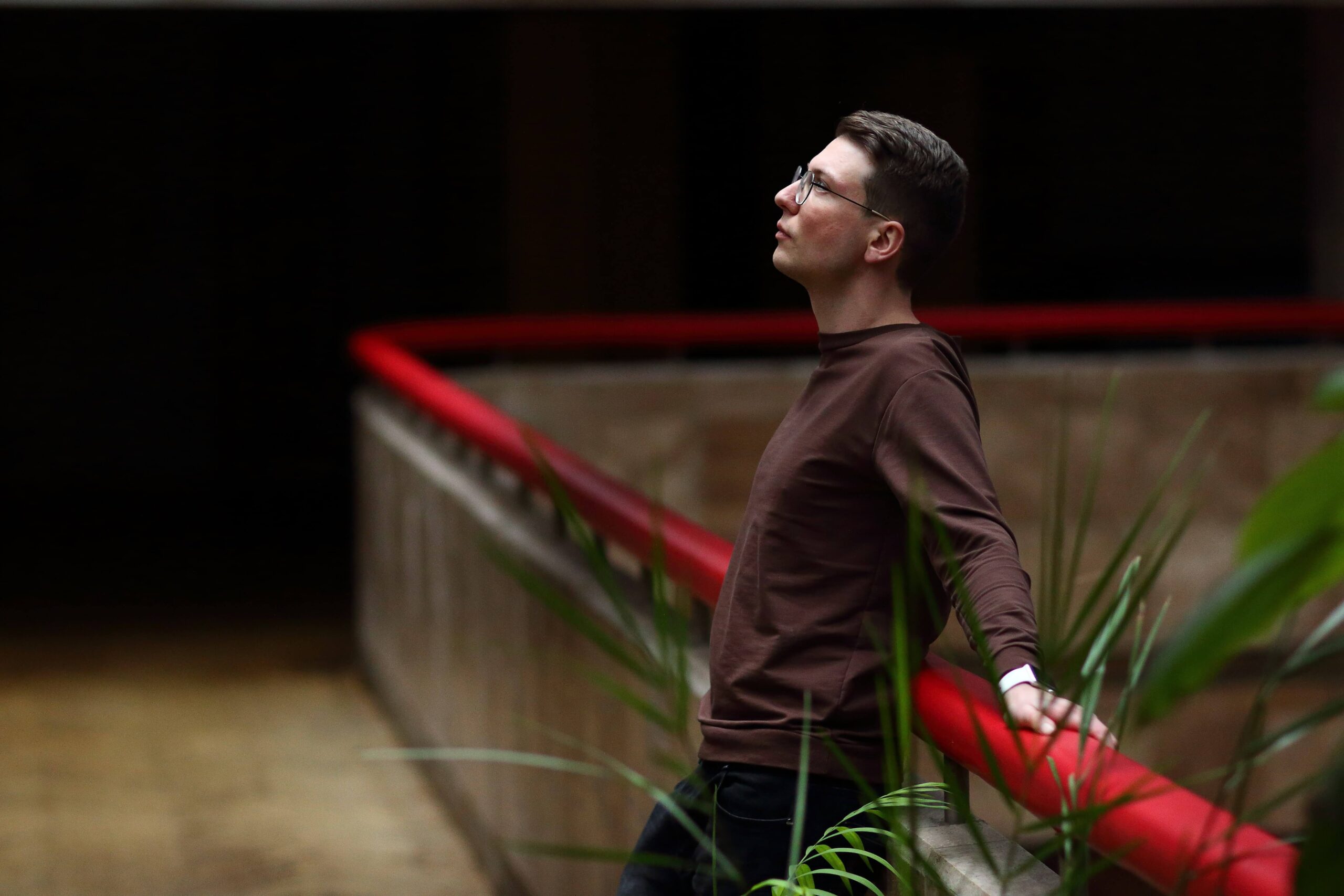
There are also other problems. We’re short on everything: classroom space (there are 36 kids in my class), visual aids that I have to make myself in my free time. Sometimes there’s not enough time, sometimes, sometimes there’s not enough support on various issues.
But comparing the elementary education system now to ten years ago — it’s like night and day. This is an awesome reform, effective, and implemented.
Do you have other plans besides working with children?
In education, there’s such career growth potential, it would be a shame not to take advantage of it. I know that one day I’ll be unfit for teaching. Unfortunately, only a few people realize this. Almost no one can teach their whole life. When you’re 65 and teaching six-year-olds, it’s absurd. I feel sorry for kids whose teachers can’t jump, run, or play board games with them.
I call my kids names, call them oddballs and cacti, and they call me a bore when I ask something of them.
What has changed with the full-scale war?
The teaching process is mostly the same as last year. But classes have been restructured: some kids from my class switched to remote learning, and others came in-person. That’s the biggest challenge for a teacher—my 22 students were joined by 10 new ones. Unfamiliar with my approach, they were initially shocked. It was tough.
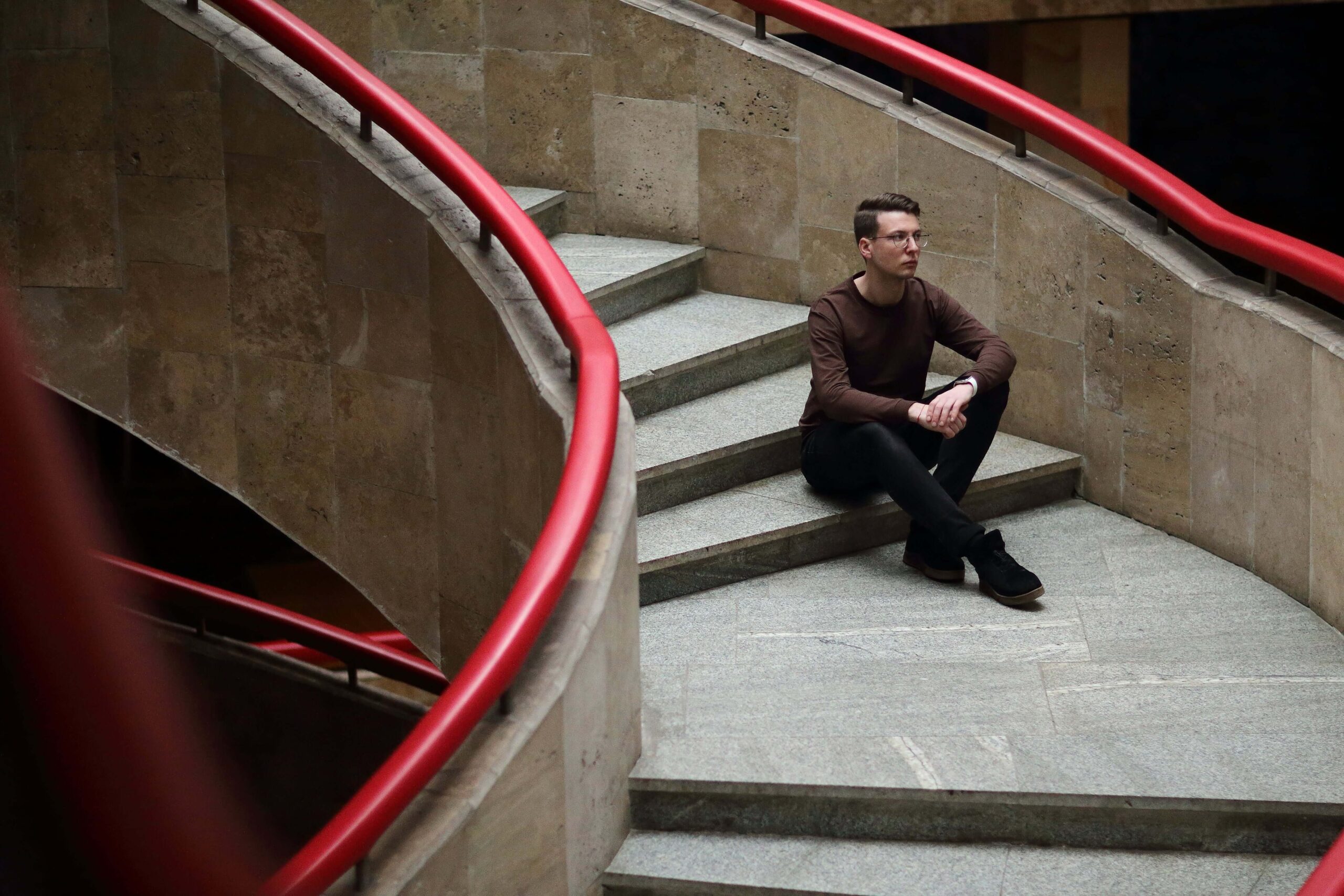
Other unique aspects include air-raid alerts and the kids’ mental states. Some were near Kyiv during intense fighting and saw a lot, so any sudden noise can frighten them. Some cry constantly: when a siren goes off, one of my students starts sobbing. I calm her, saying we’ll be safe, we have games and coloring books. Now she calms down quickly, but the first time she cried non-stop for over an hour. I told her, “You’re running out of water, that’s not good; have a drink,” and she smiled through her tears.
Does the school have a protocol for these situations?
We have a psychologist, and we work with the kids, so everything is mostly fine. Before the school year, we did self-soothing training, and then shared the methods with the kids. They know that if they’re anxious, they should count their steps or sips of water, take a deep breath and exhale quickly, or tense their body and then relax. Some kids use this; some don’t need it because they don’t feel the war as acutely. But the overall atmosphere has changed for everyone. We have music breaks where I play songs the kids request. Comparing the music now to first grade, it’s completely different. Before, it was “Lariska,” “Bulka” [simple Ukrainian kids’ songs, similar to “Baby Shark” — Ed.], songs I didn’t like. Now, it’s always “Chuty Himn,” “Horyt-Palaie,” “Chervona Kalyna” [Ukrainian for “The Anthem is heard,” “It burns and blazes” and “Red Viburnum” are modern Ukrainian patriotic songs — Ed.]. Their lives have changed.
How to talk to them about the war?
I speak directly: Russia attacked us, we are at war with them, and the Armed Forces of Ukraine are protecting us. No fairy tales.
We make postcards for our defenders. I ask what we can do to help them win, and they list ideas right away: speaking Ukrainian, knowing their history, not ignoring safety, helping the military, respecting volunteers, encouraging their families to volunteer, and so on. For the part about helping the military, I always say, “Imagine being far from home, feeling sad. Would you like to receive something warm and positive from home, something to lift your spirits?” They immediately suggest drawings, cards, and things like that. We do this constantly, sometimes twice or three times a month.
In fact, it all started even earlier. They knew about the war even in first grade. As their teacher, I explained what was happening in Ukraine, and when the full-scale war began, they weren’t too shocked—they knew what the aggressor country was capable of. We had already discussed the Holodomor and the repressions, delicately, of course, but they knew who was who. There are no arguments among the students; they’re all on the same side.
How to explain Holodomor to a second-grader?
I told them that, long ago, Ukraine was part of an idiotic (I used some different adjective) country called the Soviet Union. I didn’t use the Ukrainian translation of the word “Soviet,” “Radianskyi,” because it’s not something ours, I just said “Soviet,” because there were “sovky” and “soviety.” The main idea of this country was that no one should have anything of their own. Since most Ukrainians lived in villages, they were farmers who each had their own land and livestock, which they tended for years. Then the Soviets decided there should be communal households (kolkhozes), and they started taking everything away.
I said, “Imagine someone comes to you and says, ‘Your pencils aren’t yours anymore; they belong to the whole school.’ You sharpened them every day, colored with them, your mom bought them, and you kept them neatly in your pencil case. Imagine if someone took that away. Would you like that? No. Now imagine they took away your land, livestock. Someone from above decides you can only have this much from the communal property, and it’s not enough to feed your family. Ukrainians have a spirit of fighting against injustice, and the authorities didn’t like that, so they decided to take away all that was left.” I explained that armed people came and took everything.
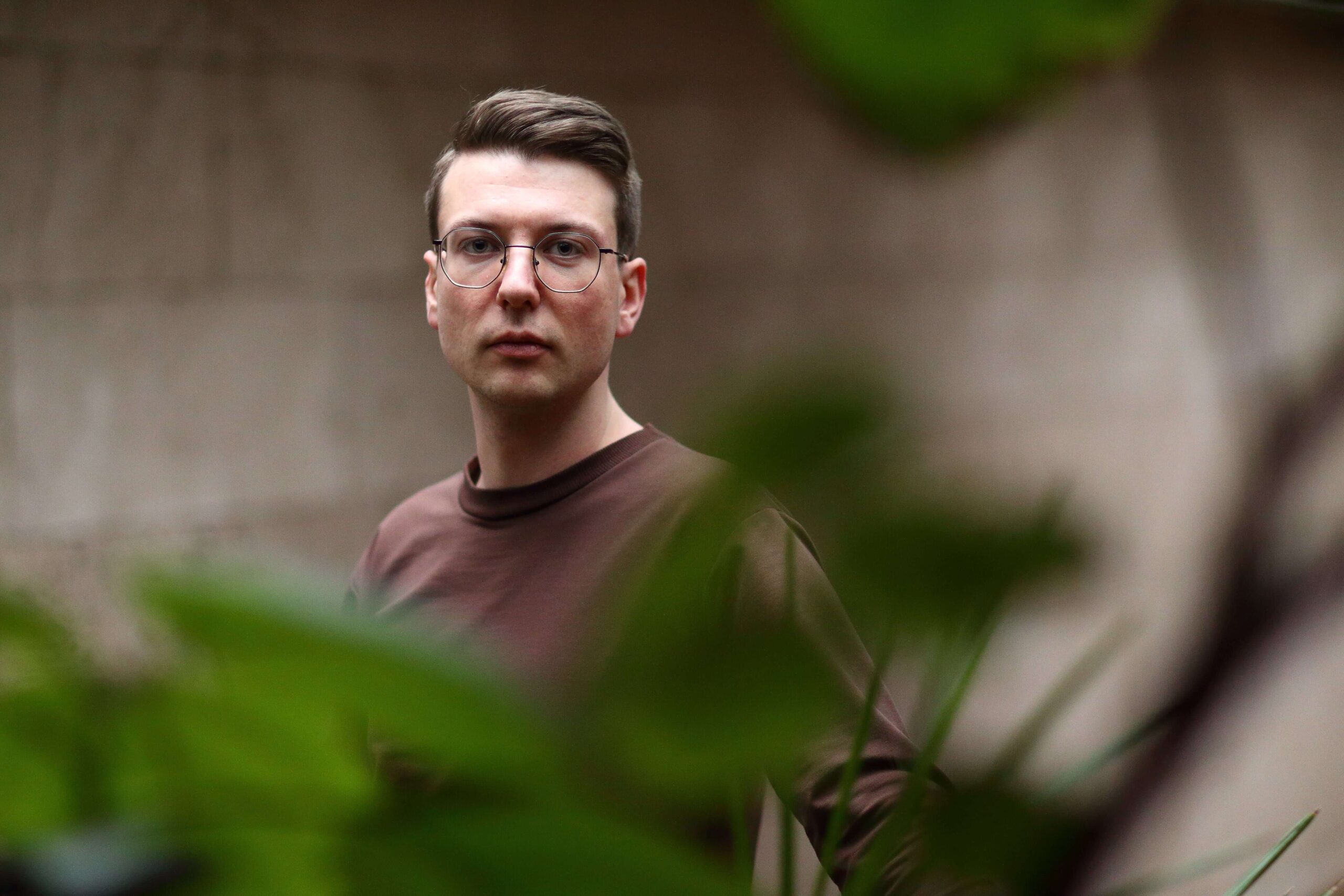
I didn’t show them photos of dead people, but I did share clips of interviews with people who survived, where they talked about what they had to eat. I noticed that after the lesson, the kids stopped throwing away their leftover buns and, for a while (because they’re young and only remember for so long), they put everything in their bags to finish later. This year, the lesson was brief because of the bombings—I made sure they remembered everything, and I added information about the Law of Spikelets. Next year, I’ll tell them that people who didn’t follow it were sent to labor camps or even killed. I believe kids need to know this.
I don’t see the problem in talking to kids this way. I spent one lesson on it. There are always spare hours in the curriculum at the end of the school year that we don’t know how to fill. There’s plenty of time, and it’s easy to prepare—there’s a wealth of information, videos, and interactive materials for any age group. I didn’t get the full picture myself until I was 20 when I watched the film Famine 33 and started researching. Back then, Ukrainians lacked courage. Before the Holodomor, a decree was issued to take away all weapons. Sixty percent gave them up voluntarily, and they took them from the rest by force.
I love discovering our history. I have a dream—to live in a village, somewhere on a farm where no one else is around, and build a cottage. I’d leave my car about a kilometer away, change clothes, and live there just as Ukrainians did a hundred years ago. But of course, that’ll never happen.
What can one do to mentally protect yourself from stress and not pass it on to kids?
I try to avoid meaningless bureaucratic tasks, like filling out the 150-column safety journal—I say I don’t have time for that. The best way to protect my mental health is to avoid stressing about things and where you can act instead. Kids are always getting minor injuries—falling, getting hurt—and I’ve learned not to overreact. For example, once a child was running, hit a desk, and bit away a part of her lip. You just take the kid to the nurse, no drama.
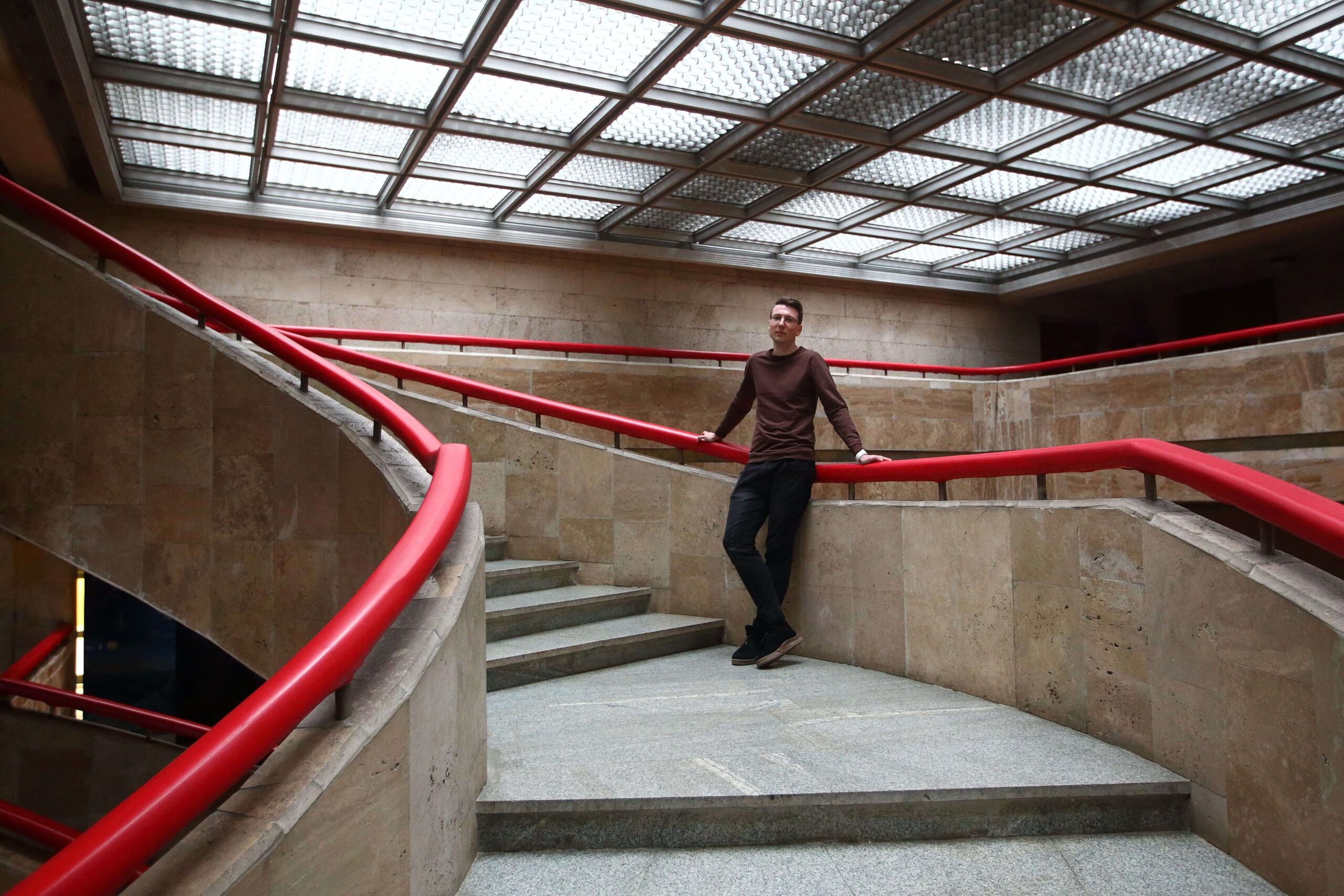
Of course, there’s still emotional fatigue from time to time. You have to understand that there are many things we can’t control or change immediately.
We need to live as best we can and do what we can to make things better.
What will the generation you’re teaching grow up to be like?
Kids started growing up faster a while ago. Because they live through these times, they’re different—they have a different worldview and topics of conversation. We adapt to this, talking more about patriotism.
These kids have more than any kids have ever had. They’re more informed; their worldview is so broad that they need more. I think they’re luckier, too. If we guide them throughout their education, they’ll be amazing.
I like these kids—their sincerity, their openness. I like feeling important to them, even if the results of my work won’t be visible for a long time. I like the idea that I’m doing something meaningful. It’s like pressing a button to start a mechanism: I enter the classroom, and the magic begins. That’s why I love my job.
Translation — Iryna Chalapchii
§§§
[The translation of this publication was compiled with the support of the European Union and the International Renaissance Foundation within the framework “European Renaissance of Ukraine” project. Its content is the exclusive responsibility of the authors and does not necessarily reflect the views of the European Union and the International Renaissance Foundation]

